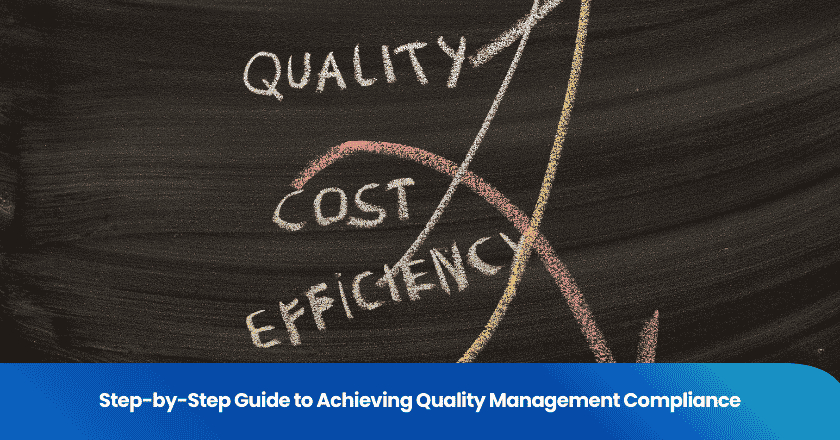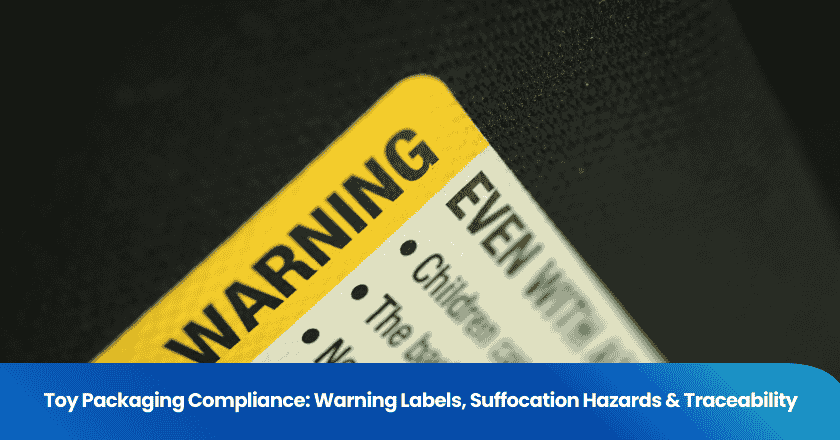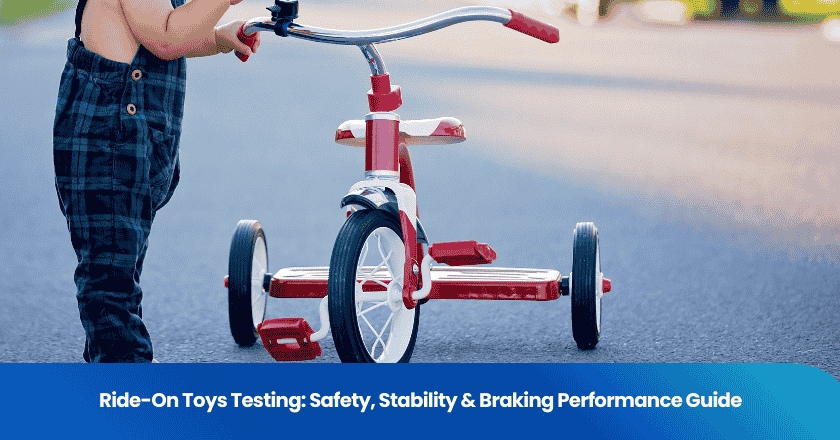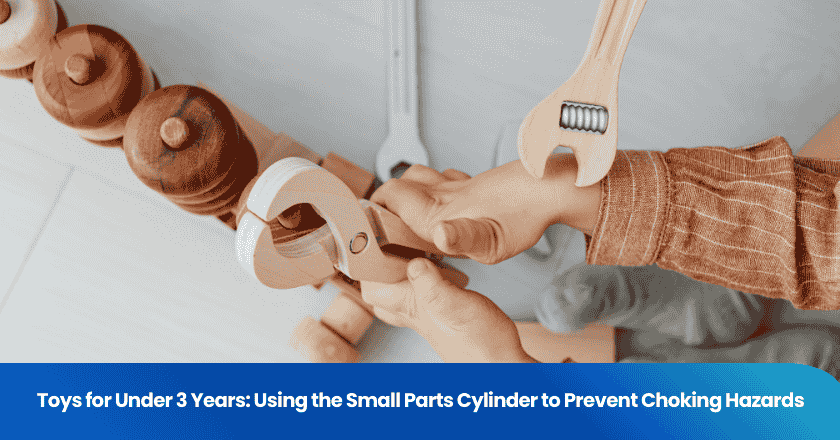
You need quality management compliance to build trust and reduce risk within your organization. Quality assurance standards set clear expectations for product and service delivery. When you focus on quality, you show customers that you value reliability and consistency.Quality assurance frameworks, like ISO standards, help you create systems that prevent errors. By making quality a core part of your culture, you strengthen every process and outcome.
Key Takeaways
- Quality management compliance builds trust and reduces risks in your organization. Focus on quality to enhance customer satisfaction and loyalty.
- Align your processes with recognized frameworks like ISO standards. This alignment helps ensure your products and services meet high-quality expectations.
- Regular audits and corrective actions are essential for maintaining compliance. Use these tools to identify gaps and improve your quality management system.
- Invest in employee training to foster a culture of quality. Well-trained staff are crucial for understanding and implementing compliance requirements effectively.
- Continuous improvement is key to long-term success. Encourage small, daily changes to enhance quality and operational efficiency.
Quality Management Compliance Basics
What Is Quality Management Compliance
You need to understand quality management compliance before you can meet regulatory and quality standards. This concept means your organization follows all quality management compliance requirements set by regulatory bodies and industry frameworks. You must align your processes with recognized quality assurance frameworks, such as ISO standards, to ensure your products and services meet strict quality standards.
Quality management compliance covers several core components:
- Document control
- CAPA (Corrective and Preventive Action) management
- Change control
- Audit management
- Supplier quality management
- Training management
- Complaint management
- Risk management
You also need to focus on quality policy and objectives, documented information, a process approach, leadership and commitment, customer focus, risk-based thinking, performance evaluation, continuous improvement, training and competence, and supplier quality management. These elements form the backbone of quality assurance and help you meet compliance standards across all regulatory environments.
Tip: Align your quality management system with ISO standards to create a strong foundation for regulatory compliance and continuous improvement.
Why It Matters
Quality management compliance protects your organization from many risks. If you ignore quality assurance and regulatory requirements, you face disruptions in operations, unexpected costs, and customer dissatisfaction. Non-compliance with quality standards can damage your reputation and lead to legal or financial penalties.
You must follow regulatory and quality standards to maintain trust and credibility. When you meet compliance standards, you show customers and regulators that you value quality and safety. This commitment helps you avoid product recalls, reduce operational disruptions, and improve customer satisfaction.
- Disruption of operations can cause production delays.
- Additional costs from recalls or repairs impact profitability.
- Customer dissatisfaction leads to lost business.
- Poor quality management compliance damages your reputation.
- Legal and financial risks increase with regulatory violations.
By following ISO standards and quality assurance frameworks, you create a culture of quality and meet all regulatory requirements. This approach ensures your organization remains competitive and resilient in a demanding market.
ISO Standards Overview
Key ISO Standards
You need to understand the most important iso standards to achieve quality management compliance. These standards set the foundation for quality, risk, and environmental management in your organization. The following table highlights the most widely adopted iso standards for quality:
| ISO Standard | Description |
|---|---|
| ISO 9001 | Establishes quality management systems to enhance customer satisfaction and regulatory compliance. |
| ISO 14001 | Framework for environmental management systems to improve environmental performance. |
| ISO 31000 | Provides guidance on best-practice risk management processes. |
You see iso 9001 as the most recognized quality standard worldwide. Over 1.3 million organizations have achieved iso 9001 certification. Certification rates continue to rise, especially in emerging economies. Many sectors now recognize the benefits of iso 9001 for operational improvement and market expansion. According to the ISO Survey, there are 837,052 iso 9001 certificates across more than 170 countries. This global reach shows the value of iso standards for quality and compliance.
You also need to consider iso 14001 for environmental quality and iso 27001 for information security. These iso standards help you address specific quality needs in your industry. By adopting these frameworks, you build a strong quality culture and meet regulatory expectations.
Choosing the Right ISO Framework
Selecting the right iso framework for your organization requires careful evaluation. You should review your industry regulations, geographic location, and company needs. The following table outlines key criteria to guide your decision:
| Criteria | Description |
|---|---|
| Industry Regulations | Consider specific regulations that apply to your industry. |
| Geographic Location | Evaluate how location impacts the choice of framework. |
| Company Needs | Assess the unique needs and objectives of your organization. |
| Framework Alignment | Ensure the framework aligns with existing security programs and practices. |
You need to understand which iso standards best fit your quality goals. Consider industry standards relevant to your products or services. Review all applicable laws and regulations. When you align your quality management system with the right iso standards, you create a foundation for continuous improvement and long-term success. Remember to evaluate iso 9001, iso 14001, and iso 27001 as you build your quality strategy. These frameworks support your efforts to achieve and maintain high quality across all operations.
Step-by-Step Compliance Process
Achieving quality management compliance requires a structured approach. You must follow a clear sequence to ensure your organization meets regulatory requirements and maintains high standards of quality. This process involves assessment, planning, implementation, documentation, training, audits, corrective actions, and certification.
Assess Current State
Begin by evaluating your current position regarding quality management compliance. You need to identify gaps in your quality management system and understand both internal and external factors that influence your compliance posture.
Key steps to assess your current state:
1. Identify critical quality and compliance gaps.
2. Determine customer expectations and regulatory requirements.
3. Establish measurable quality objectives to guide implementation.
Consider these factors:
- Regulatory requirements: Review industry standards and regulatory requirements that your quality management system must meet.
- Customer expectations: Understand the quality standards your clients expect.
- Market conditions: Consider market trends and competitive pressures.
- Organizational goals: Align the quality management plan objectives with your company's goals.
- Workforce skills and training: Assess your team's current skills.
- Existing processes and resources: Review your current operational processes.
A gap analysis helps you pinpoint differences between your current quality management system and the desired state as defined by iso standards. Use this diagnostic tool to review policies, processes, and procedures for effectiveness and compliance. Understanding root causes of compliance gaps allows you to implement effective remediation techniques and foster a culture of continuous improvement.
Set Objectives
You must set clear, measurable objectives for quality management compliance. These objectives should align with your business strategy and regulatory requirements.
Tips for setting objectives:
- Be specific about what you want to achieve.
- Make sure objectives can be measured with existing data collection systems.
- Ensure objectives are attainable; overly ambitious goals can demotivate teams.
- Objectives should be relevant to your business's strategic direction.
- Set a deadline for each objective to maintain a sense of urgency.
Examples of measurable objectives:
1. Reduce product defects by 5% within the next fiscal year.
2. Increase customer satisfaction scores from 80% to 90% over six months.
3. Improve on-time delivery rates from 95% to 98% by Q3.
Setting objectives provides a roadmap for your quality management plan and supports compliance monitoring.
Develop Plan
Develop a comprehensive quality management plan that defines your approach to achieving quality management compliance. You must align your quality processes with regulatory standards set by bodies such as iso and the FDA.
Best practices for developing your plan:
- Emphasize the importance of quality assurance in regulated industries.
- Align quality processes with regulatory standards.
- Embed strong quality assurance practices into daily operations to mitigate risks and enhance product quality.
- Define quality standards and stakeholder expectations.
Steps to create your plan:
1. Define what quality means for your organization and set stakeholder expectations.
2. Document policies, procedures, and standards for achieving quality goals.
3. Establish performance measure thresholds and roles for team members.
4. Implement periodic testing to monitor quality throughout the project lifecycle.
Quality assurance plays a crucial role in your quality management plan by ensuring every process and product meets high standards. This strategic approach fosters a culture of continuous improvement and positions your company for long-term success.
Implement QMS
You must implement a robust quality management system (QMS) to achieve iso compliance and meet regulatory requirements. Assemble a cross-functional implementation team to drive the process.
Key elements for successful QMS implementation:
- Assemble a cross-functional team.
- Document key processes and procedures.
- Select appropriate QMS software.
- Train employees on QMS principles.
- Implement QMS across the organization.
- Monitor performance with Key Performance Indicators (KPIs).
- Ensure continuous improvement and corrective actions.
Implementing your QMS ensures that quality management procedures are standardized and that compliance monitoring is effective across all departments.
Document Procedures
Proper documentation is essential for quality management compliance. You must follow documentation standards that meet regulatory and iso requirements.
| Standard | Used In | Purpose | Documentation Must-Haves |
|---|---|---|---|
| ISO 9001 | All sectors | Standardized QMS principles | Policy Manuals, KPIs, Process Maps, CAPA, Audit Logs |
| ISO 13485 | Medical Devices | QMS for regulatory requirements | Risk Analysis, DHR, DHF, CAPA, Complaint Files |
| ISO 27001 | Tech, Healthcare | Data confidentiality & integrity | SoA, Risk Register, Incident Response Logs, Access Records |
| IATF 16949 | Automotive | Sector-specific QMS | Process Control Plans, PPAP, SPC, Supplier Records |
| AS9100 | Aerospace | Product safety, airworthiness | Inspection Records, Configuration Logs, Supplier Docs |
| 21 CFR Part 820 | Medical Devices | FDA Quality System Regulation | DMR, CAPA Reports, Training Records, Complaint Logs |
| GxP (GLP, GMP) | Pharmaceuticals | Regulated environments | Audit Trails, Batch Records, Equipment Logs, Deviations |
| EU MDR | EU MedTech | Regulatory conformity | Clinical Reports, Risk Files, Vigilance Documentation |
Documenting your quality management procedures ensures traceability, supports audits, and demonstrates compliance with iso standards.
Train Employees
You must train employees to ensure engagement and understanding of quality management compliance. Use a mix of delivery methods to address diverse learning styles.
Effective training methods:
- Incorporate videos, infographics, live demonstrations, group discussions, and interactive tools.
- Embrace a culture of continuous improvement by evaluating training effectiveness and refining methods based on feedback.
- Follow up with participants to gather insights and suggestions for future sessions.
Consider your budget, organizational culture, learning styles, and training requirements when designing your training program. Continuous training improvement supports compliance monitoring and strengthens your quality management system.
Audit and Review
Conduct regular audits to maintain quality management compliance and meet regulatory requirements. Audits help you identify areas for improvement and ensure your quality management system aligns with iso standards.
Audit frequency guidelines:
- Annual audits: Most organizations conduct internal audits annually, often required by regulatory bodies.
- Risk-based audits: Increase audit frequency based on identified risks, such as quarterly audits after a security breach.
- Compliance requirements: Certain industries mandate more frequent audits, especially for publicly traded companies.
- Organizational changes: Significant changes may necessitate more frequent audits to reassess risks.
Quality management audits provide valuable insights into your processes and support ongoing compliance monitoring. Use the iso audit process to review documentation and work practices.
Corrective Actions
After audits, you must take corrective actions to address nonconformities and improve your quality management system. This step is vital for maintaining regulatory compliance and continuous improvement.
Common corrective actions:
1. Identify the nonconformity through inspections, audits, or customer feedback.
2. Conduct root cause analysis using tools like the '5 Whys' or Fishbone Diagram.
3. Implement a structured corrective action plan to eliminate the causes of nonconformity and prevent future issues.
You may need to revise processes, implement training programs, update documentation, or modify equipment. These actions strengthen your quality management procedures and support compliance monitoring.
Certification
Obtaining certification demonstrates your commitment to quality management compliance and regulatory standards. The process involves several steps and typically takes three to six months.
Certification process:
1. Conduct internal audits to familiarize staff with iso standards.
2. Complete a comprehensive internal audit of your quality management system.
3. Select an accredited independent registrar for the certification audit.
4. Prepare for the certification audit by organizing work areas and preparing staff.
5. Pass Stage 1 and Stage 2 audits: Stage 1 reviews documentation; Stage 2 audits work processes.
6. Receive certification, which is valid for three years.
Certification validates your quality management system and supports ongoing compliance monitoring. Maintaining certification requires regular audits and continuous improvement.
Quality Assurance Best Practices
Documentation
You set the foundation for quality assurance best practices by establishing strong documentation. Clear procedures and policies guide your team and support regulatory requirements. Use document identification and version control to prevent confusion. Streamline approval and review processes so updates happen quickly. Organize and store documents efficiently to ensure easy access during audits. Train your staff on documentation procedures and conduct regular audits to maintain accuracy. When you foster a culture of quality and compliance, you reduce errors and support best-practice compliance frameworks.
- Establish clear procedures and policies
- Use document identification and version control
- Streamline approval and review processes
- Organize and store documents efficiently
- Train staff on documentation procedures
- Conduct regular audits and reviews
- Maintain data accuracy
Training
You empower your team to uphold quality assurance best practices through effective training. Choose the right training methods to match your goals and regulatory needs. The table below highlights best practices for training in quality assurance:
| Training Type | Description |
|---|---|
| eLearning | Offers flexibility and scalability, ideal for theoretical aspects of QA training. |
| Expert-led in-person workshops | Provides immediate feedback and collaborative learning, essential for practical topics. |
| On-the-job training | Hands-on approach that reinforces skills through real-world application and observation. |
Regular training ensures everyone understands the quality assurance process and regulatory standards. When you invest in ongoing education, you build a workforce that values quality and compliance.
Reviews and Feedback
You drive improvement by making reviews and feedback part of your quality assurance best practices. Implement feedback systems from end-users to pinpoint areas needing attention. Conduct periodic audits of processes and outcomes to identify deviations from regulatory and iso standards. These actions help you refine your quality assurance process and sustain compliance.
- Gather feedback from end-users
- Schedule regular audits of processes and outcomes
Data and Metrics
You measure the effectiveness of your quality assurance best practices by tracking key data and metrics. Use these metrics to identify strengths and areas for improvement. The table below lists important metrics for monitoring quality and regulatory compliance:
| Metric | Description |
|---|---|
| Data downtime | Measures the time data is unavailable. |
| Total number of data incidents | Counts the incidents affecting data quality. |
| Table uptime | Tracks the availability of data tables. |
| Time to response (detection) | Measures the time taken to detect issues. |
| Time to fixed (resolution) | Measures the time taken to resolve issues. |
| Importance score | Rates the significance of data elements. |
| Table health | Assesses the overall condition of tables. |
| Table coverage | Evaluates the extent of data coverage. |
| Monitors created | Counts the number of monitoring tools used. |
| Number of unused tables and dashboards | Tracks inefficiencies in data usage. |
| Deteriorating queries | Identifies queries that are performing poorly. |
| Status update rate | Measures how frequently status updates occur. |
Measuring quality management processes helps you evaluate safety, performance, and efficiency. Quality metrics reveal your company's health and customer satisfaction. When you make quality a shared responsibility, you strengthen your best-practice compliance frameworks and support ongoing regulatory success.
Best Practices for Compliance
Leadership and Culture
You drive quality management compliance by building strong leadership and a positive culture. Leaders set the tone for quality assurance by encouraging open communication and feedback. You empower employees to take ownership of their work and recognize contributions to quality improvement. When you set clear expectations for roles and responsibilities, you foster accountability. A unified direction and strategic focus help align quality objectives with broader business goals. You promote engagement and trust by rewarding good performance and providing training opportunities.
- Encourage open communication and feedback
- Recognize and reward contributions to quality improvement
- Empower employees to take ownership
- Set clear expectations for roles and responsibilities
- Align quality objectives with business goals
Continuous Improvement
You strengthen your quality management system by embracing continuous improvement. This approach fosters ongoing enhancement and better operational efficiency. You reduce waste and improve quality by making small, daily changes. The Kaizen principle shows that quality is never static. You align practices with iso standards and customer expectations by streamlining processes and eliminating bottlenecks. Over time, incremental changes boost productivity and compliance outcomes.
Tip: Encourage your team to suggest improvements regularly. Small adjustments can lead to significant gains in quality assurance and operational efficiency.
Technology and Tools
You support quality management compliance by using technology solutions that institutionalize quality across your organization. Quality solutions automate critical processes and ensure regulatory compliance. You align quality initiatives with your business strategy by selecting tools that fit your needs. Many platforms offer pre-configured modules and validation packages, making it easier to meet iso requirements. Automation helps you monitor quality assurance metrics and maintain consistency.
| Technology Solution | Benefit |
|---|---|
| Automated QMS | Streamlines quality processes |
| Data Analytics Tools | Tracks quality metrics |
| Document Management | Ensures iso-compliant records |
Communication
You ensure organization-wide understanding of compliance requirements by using effective communication strategies. Start with clear objectives to define the purpose of your quality assurance efforts. Tailor messages for different groups to maximize impact. Two-way communication fosters trust and encourages feedback. Regular updates keep quality top-of-mind. Storytelling helps illustrate the importance of compliance and makes complex issues relatable.
- Define clear objectives
- Tailor messages for different audiences
- Foster two-way communication
- Maintain consistency and frequency
- Use storytelling to engage employees
Overcoming Challenges
Change Management
You face many challenges when you introduce new quality management systems or update existing ones. Change management often becomes the most difficult part of your quality journey. You may encounter resistance to change from employees who feel comfortable with current processes. Leadership support sometimes falls short, making it hard to drive initiatives forward. Inadequate training leaves teams unprepared for new quality assurance requirements. Poor communication can create confusion about iso standards and expectations. Insufficient resources limit your ability to implement improvements. Inconsistent processes across departments make it difficult to standardize quality. Failure to measure performance effectively prevents you from tracking progress.
- Resistance to change
- Lack of leadership support
- Inadequate training
- Poor communication
- Insufficient resources
- Inconsistent processes
- Failure to measure performance effectively
Tip: You can overcome these obstacles by building a strong communication plan, investing in training, and securing leadership commitment. Regularly measure your progress to keep your quality assurance efforts on track.
Consistency
You need to maintain consistency in quality management across all departments and locations. Adopting a Quality Maturity Model helps you assess and improve your quality assurance practices. This model gives you a structured way to track quality performance, set meaningful targets, and provide visibility into what drives results. You evaluate your current quality management systems and identify weaknesses. With this information, you create a roadmap for improvement and ensure standardized processes. Consistency in quality means every team follows the same iso requirements and quality assurance procedures, no matter where they operate.
Keeping Up with Standards
You must keep pace with evolving iso standards and regulatory requirements to maintain high quality. The following strategies help you stay ahead:
| Strategy | Description |
|---|---|
| Proactive Monitoring | Track iso standard development and industry consultations. |
| Cross-Functional Collaboration | Engage teams from different areas to build ownership of quality assurance and compliance. |
| Continuous Improvement | Reassess and adapt your quality processes to align with new iso requirements. |
| Use of Technology | Implement digital platforms for real-time quality documentation and coordination. |
| Participation in Industry Groups | Join associations to gain insights and influence iso standard development. |
| Benchmarking | Learn from industry leaders to discover new quality assurance solutions. |
| Integrated Management Approaches | Develop frameworks that address multiple iso standards efficiently. |
| Employee Development | Invest in training to maintain expertise in iso standards and quality assurance. |
You should also engage in regular internal audits to identify non-conformities. Stay updated on iso changes through continuous education. Foster a culture of continuous improvement to ensure your organization adapts quickly to new quality requirements.
You strengthen your organization by following a step-by-step approach to quality management compliance. The table below highlights how compliance with iso standards and quality assurance best practices delivers lasting benefits:
| Benefit | Description |
|---|---|
| Enhance Reputation | Compliance with recognized standards builds trust with customers, partners, and stakeholders. |
| Improve Operational Efficiency | Streamlining processes through compliance measures leads to enhanced productivity and reduced waste. |
| Foster Continuous Improvement | A commitment to compliance encourages a culture of continuous improvement within the organization. |
You drive quality by implementing iso standards and quality assurance frameworks. Regular review and adaptation help you maintain operational efficiency, improve customer satisfaction, and optimize resources. You create a culture where quality and compliance support innovation and strengthen your reputation.
FAQ
What is the first step to achieving quality management compliance?
You should start with a thorough assessment of your current processes. Identify gaps and review all relevant regulations. This step helps you understand where you stand and what you need to improve.
How often should you review your quality management system?
You need to review your quality management system at least once a year. Regular reviews help you stay aligned with iso standards and quickly address any issues that arise.
Why is employee training important for compliance?
Employee training ensures everyone understands their roles in maintaining compliance. Well-trained staff follow procedures correctly and help your organization meet iso requirements.
What happens if you do not maintain compliance?
You risk operational disruptions, legal penalties, and loss of customer trust. Maintaining compliance protects your organization and supports long-term success.
Grow your business with TradeAider Service
Click the button below to directly enter the TradeAider Service System. The simple steps from booking and payment to receiving reports are easy to operate.




